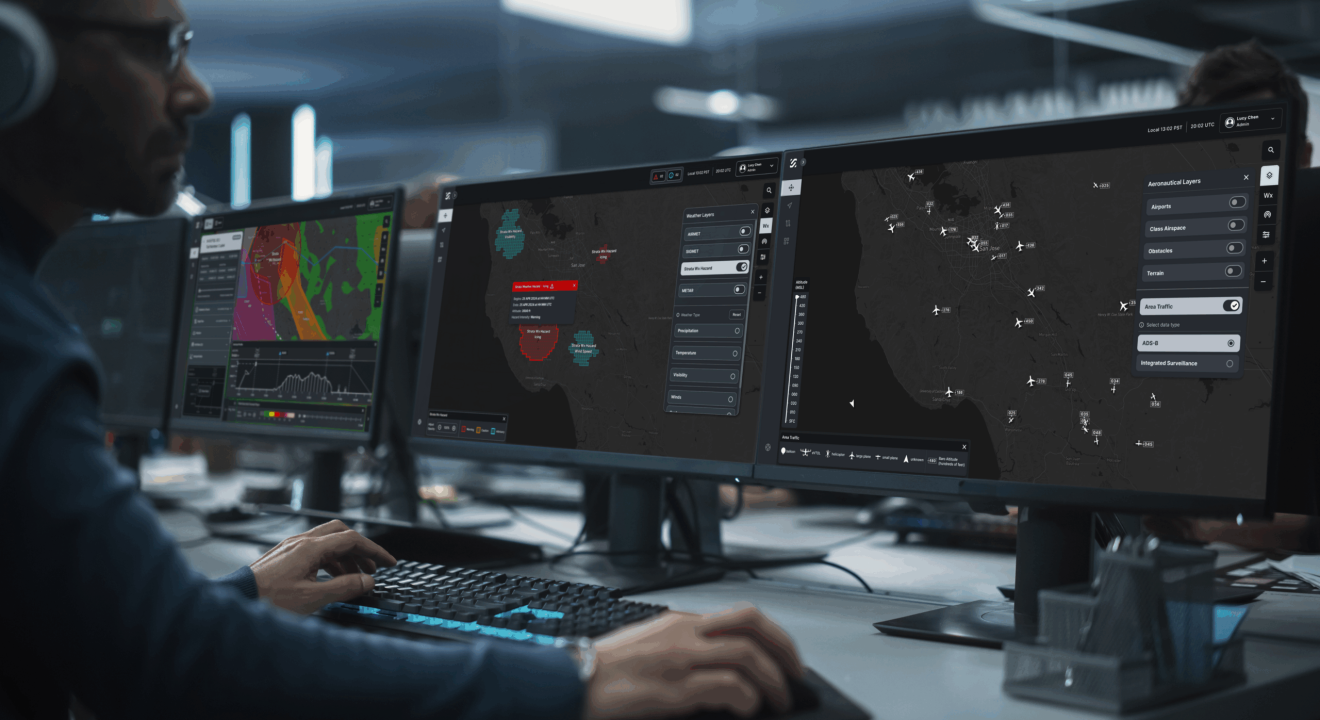As the aviation industry embraces Advanced Air Mobility (AAM) and autonomous flight, understanding how humans and autonomous systems work together is essential. This balance is vital for ensuring safe, reliable, and predictable operations.
Autonomous flight refers to aircraft that can operate using advanced software and algorithms to make informed decisions without human direction, such as managing flight routes, avoiding conflicts, and responding to hazards. This does not imply the complete absence of human involvement; the remote pilot in command (RPIC) remains in the loop and supervises the flight for its entire duration.
Human oversight is a necessary component, particularly in the early stages of AAM. It provides an additional layer of safety, ensuring that someone can promptly identify mistakes if the autonomous systems fail to perform correctly. The RPIC helps the aircraft maintain situational awareness, much like an onboard pilot. Additionally, human oversight prevents excessive reliance on automation that is still proving itself, enhancing confidence in operations as public acceptance continues to grow.
Autonomous Technology
These autonomous systems ensure that human operators can effectively monitor and intervene when necessary, providing situational awareness and decision support. Our system actively monitors environmental conditions and promptly alerts the RPIC and operations manager if any constraints arise.
Recommendations are then provided to the human operators through a suite of our services. For example, Hazard and Constraint Monitoring service continuously monitors real-time traffic, airspace, and weather conditions and issues an alert if new hazards emerge. If the hazards popped up along the route, Dynamic Rerouting service then propose alternate route suggestion. The RPIC monitoring the flight can evaluate the suggestions and then approve or reject them based on their situational awareness and analysis of the environment.
When AAM aircraft first enter the airspace and autonomous technology is still in the early stages, an RPIC will be managing one flight. As autonomous technology advances and these systems become more sophisticated, operations will achieve a higher level of reliability, resulting in increased public trust. When this happens, an RPIC or operations manager will be able to oversee multiple aircraft simultaneously, needing to intervene only on rare occasions when something unusual occurs.
Transitioning From the Cockpit to the Ground
Since the RPIC is a new role in the aviation landscape, training for proper operations and oversight will be essential. Traditional pilots rely on radar and looking out the window to be aware of their environment, but the RPIC develops the aircraft’s situational awareness from the ground rather than the sky.
Transitioning into the role of the RPIC would emphasize becoming technically proficient in using a ground-based system and learning to be situationally aware by interpreting the data presented. Instead of learning the controls in the cockpit, the operator would familiarize themselves with the ground operational platform, like SkyGrid’s interface. For example, the RPIC would learn to analyze data provided by SkyGrid’s digital information services—such as terrain and obstacle data, weather data, Ground-Based Traffic Surveillance (GBTS), NOTAMs, aerodrome and airspace data, C2 and GNSS performance data, and resource and capacity data—to become situationally aware of the operational area.
Increased levels of autonomy will lead to a higher density of AAM flights. When this occurs under current flight rules, ATC will need to learn to work with different communication channels and new tools to recommend optimal spacing and route planning for both traditional and autonomous aircraft.
Balancing Autonomy with Human Oversight
At SkyGrid, safety is our top priority in autonomy development. As a Third-Party Service Provider (TSP), our high-assurance ground-based system leverages real-time data to offer digital information services, strategic planning services, tactical planning services, and mission support services, enabling end-to-end autonomy. Our goal is to provide human operators with an experience that is as smooth and seamless as possible, just like if they were pilots on an aircraft.
We aim to ensure that the RPIC has all the tools they need in one place and the ability to intervene at any point during a flight. Even when an RPIC is hands-off, they will always remain in the loop and monitor the situation. Through our interface, they can execute decisions and communicate with ATC. The RPIC will supervise a flight and analyze the aircraft’s surrounding environment in real-time with the help of our services. If adverse conditions arise in the operational area—such as airspace constraints, hazards, TFRs, or bad weather—the system will flag them and alert the RPIC, who can then take charge and make decisions based on our system’s analysis.
Human Intervention as a Safeguard
Having a human in the loop for AAM operations is a crucial safeguard against catastrophe. Autonomous systems could misinterpret a scenario. Something may be missing from the data, causing the system to assume a path is clear when it actually is not. In this case, the RPIC would observe the misinterpretation and then override the autonomy using our ground-based system.
Safety Protocols
It is critical to have human oversight until these new technologies are approved, regulated, and trusted. Currently, autonomous aircraft need to comply with existing Instrument Flight Rules (IFR) and Visual Flight Rules (VFR), which assume that a pilot is in the cockpit. While the FAA and other regulatory bodies work to develop standards for autonomous flight, our system will ensure that AAM aircraft can operate under current flight rules and bridge the gap between operators and aircraft.
Implementing new flight rules, such as Automated Flight Rules (AFR), to accommodate the evolving aviation landscape would help ensure that aircraft require human oversight, can operate safely on their own, and can fly in parallel with IFR and VFR.
